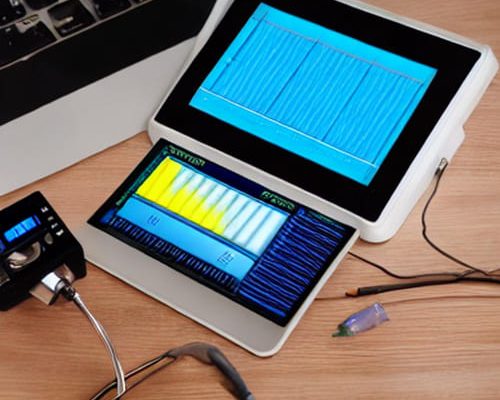Load Flow, Short Circuit, and Relay Coordination in Power System Analysis
To provide your facility with a power system that is safe, efficient, and reliable for operation under both normal and abnormal situations, a power system analysis consists of a number of technical assessments and the use of scientific analytic ideas and methodology.

Understanding how a system will operate in various configurations and the consequences of disturbances like capacitor switching, the start of a large motor, and arc flash incident energy are the goals of a power system analysis. An examination of the power system may also be necessary to ensure the reliable functioning of safety equipment in the case of a short circuit or any other problem. Power system studies are crucial for guaranteeing a consistent and dependable supply of energy. A well-designed power system assures reliable operation and increases plant availability under all operating conditions. Systems that are poorly built have defects, inefficiencies, and reduced security.
The majority or all of the following sub-studies may be included in a typical power system analysis:
- Investigation and load flow analysis
- Examining and analyzing short circuits
- Taking relay coordination into account
- Research & Analysis of Arc Flashes
- Researching harmonics
- Analysis of dynamics and transients
- Earthing research
The first three investigations will be covered in this blog. and understand the methods and tactics used to carry out each enquiry.

Load Flow Analysis and Study:
A load flow study examines an electrical network to ascertain how power is moving. It helps in figuring out the power system’s operational status, the amount of active and reactive power produced, losses, voltage, current, and power factor.
The following three stages made up the load flow analysis:
- Network and component modeling for power systems
- The creation of equations for load flow.
- Using numerical methods, the load and flow equations are solved.
There are three methods for calculating data about the power system:
- One of the analytical techniques that is most often used is the Gauss-Seidel System. This approach has the benefits of being simple to use, using little in the way of computer resources, and doing the job more quickly. However, because of the delayed convergence, more iterations are required. The number of buses rises in tandem with the number of iterations.
- The Newton-Raphson method, which is more difficult, uses quadratic convergence, which is useful in complex situations. As fewer repetitions are needed to reach convergence, this method uses less computational power. Because it is less dependent on complicated factors like regulating transformers and bus selection for slack, it is more accurate. It may be challenging to program because it uses quite a lot of machine memory.
- Another method for doing load flow analysis is the Fast Decoupled Load Flow System (FDLF). The major benefit of this method is that it takes up less computer memory.. It is a recommended substitute for Newton-Raphson for real-time power grid management since the calculation speed is five times faster. There are only few situations in which you may utilize this application. As a result, it is more difficult to adapt it to other power industry concerns like flow or system protection.


Short Circuit Analysis & Study:
One or more of the following kinds of short circuits will be considered in a short circuit analysis:
- Line-to-line fault, which occurs when two phases simultaneously go dark.
- Only one phase contacts the ground in a single line-to-ground failure.
- A double line-to-ground fault in which the ground and both phases are shorted at the same time.
- All three phases are shorted together in a three-phase fault.
It will be simpler to draw a one-line diagram of the power distribution system if the kind of problem is known. Use the single-line diagram that was created and an impedance diagram that includes numerical values for the utility source, transformer, and conductor in relation to each component’s useable voltage to calculate short circuits. The short circuit current, the transformer multiplier, and the full-load amps are all included in the estimated values. In order to ensure that the power distribution system is equipped with the necessary safety measures at different locations to avoid danger and downtime, it is crucial to compare the gathered data with the equipment ratings.
Analysis of Relay Coordination:
Relay coordination is an important part of power system security design because coordination systems allow for quick, efficient, and specific relay processes that can be used to isolate the problem. The degree to which overcurrent preventative devices are necessary in the power system is determined via coordination analysis. It also helps in deciding on the proper specifications, arrangements, and measurements to strike a balance between equipment security and constrained system functioning.
Power system modeling software like ETAP is used to gather data. Short circuit analysis measure’s fault currents at each electrical site. Selecting and tuning protective devices reduces system equipment failures. Comparing the protective device’s time-current characteristic curves reveals coordination breakdowns. Adjustments ensure protective devices work reliably and selectively.
The Power System Analysis's Benefits Contain:
- The electrical grid is more dependable now.
- Using apparatus with the correct power rating.
- Safety improvements and a decrease in electrical hazards
- Adherence to legal requirements and electrical installation regulations.
- Alternative methods are suggested to increase the system’s longevity and performance.
- The state of the power system at the moment is recorded in preparation for any upcoming inspections.
CareLabs offers Load Flow study and analysis, Short Circuit study and analysis, and Relay coordination analysis to monitor the voltage at different buses and the actual and reactive power flow between buses, analyze the system under different fault conditions, and figure out how well the system can handle small and large disturbances. To acquire an analysis of your company’s power infrastructure in Argentina, get in touch with us or request a quote. Within 24 hours, one of our customer service representatives will respond.
LATEST NEWS
Harmonic Study &
Analysis



